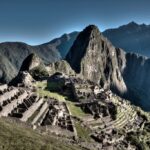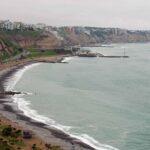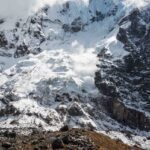Cusco and the Sacred Valley, Peru
Cusco is a city in southeastern Peru, near the Urubamba Valley of the Andes mountain range. It is the capital of the Cusco Region as well as the Cuzco Province. In 2013, the city had a population of 435,114. Located on the eastern end of the Knot of Cuzco, its elevation is around 3,400 m (11,200 ft). Cusco was the site of the historic capital of the Inca Empire and was declared a World Heritage Site in 1983 by UNESCO.
Saksaywaman is a walled complex on the northern outskirts of the city of Cusco, Peru, the former capital of the Inca Empire. Like many Inca constructions, the complex is made of large polished dry stone walls, with boulders carefully cut to fit together tightly without mortar. Known locally as “sexy woman”, the site is well worth a visit.
Maras, is a small town near Cusco, known for iots nearby salt pans. Since pre-Inca times, salt has been obtained in Maras by evaporating salty water from a local subterranean stream. The highly salty water emerges at a spring, a natural outlet of the underground stream. The flow is directed into an intricate system of tiny channels constructed so that the water runs gradually down onto the several hundred ancient terraced ponds. Almost all the ponds are less than four meters square in area, and none exceeds thirty centimeters in depth. All are necessarily shaped into polygons with the flow of water carefully controlled and monitored by the workers. The altitude of the ponds slowly decreases, so that the water may flow through the myriad branches of the water-supply channels and be introduced slowly through a notch in one sidewall of each pond. The proper maintenance of the adjacent feeder channel, the side walls and the water-entry notch, the pond’s bottom surface, the quantity of water, and the removal of accumulated salt deposits requires close cooperation among the community of users. It is agreed among local residents and pond workers that the cooperative system was established during the time of the Incas, if not earlier. As water evaporates from the sun-warmed ponds, the water becomes supersaturated and salt precipitates as various size crystals onto the inner surfaces of a pond’s earthen walls and on the pond’s earthen floor. The pond’s keeper then closes the water-feeder notch and allows the pond to go dry. Within a few days the keeper carefully scrapes the dry salt from the sides and bottom, puts it into a suitable vessel, reopens the water-supply notch, and carries away the salt. Color of the salt varies from white to a light reddish or brownish tan, depending on the skill of an individual worker. The colour comes from iron oxides in the clay lining of the pond.






Leave a comment